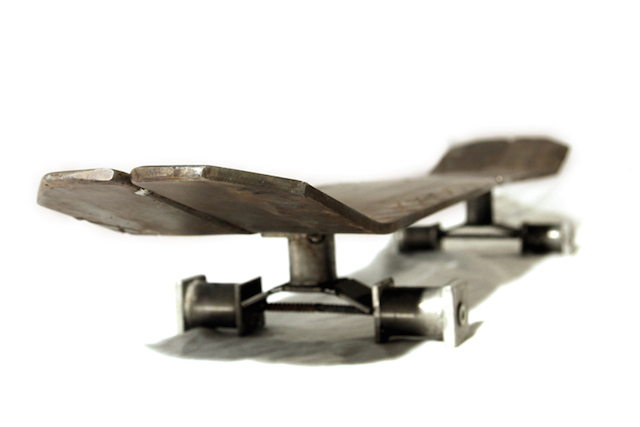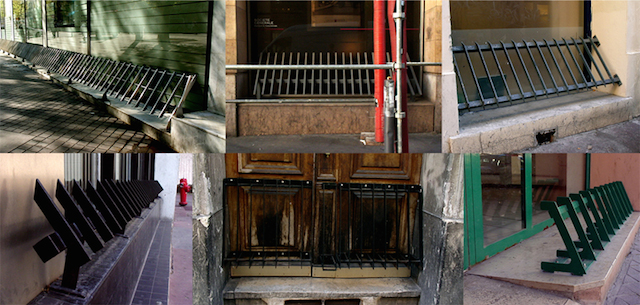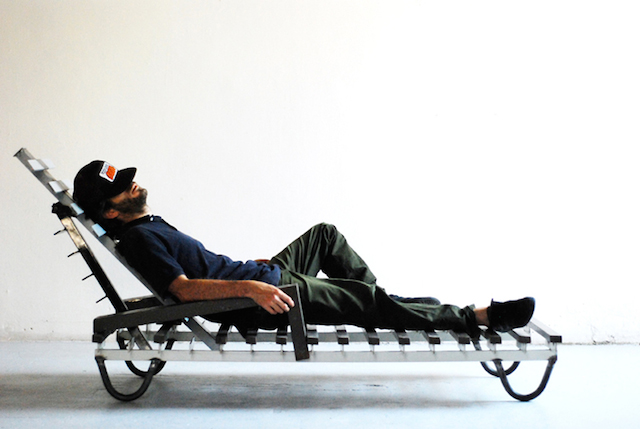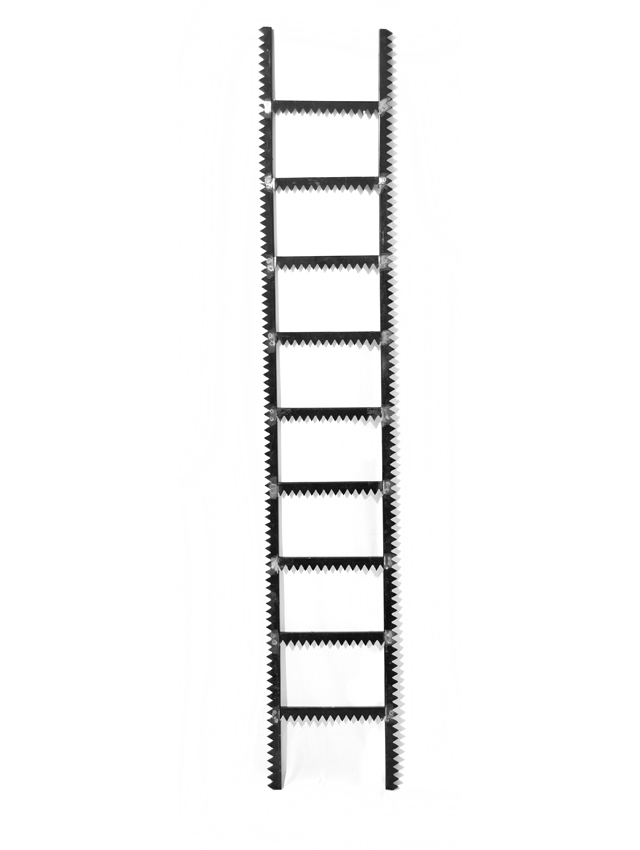
Not all of these works are particularly new, but I want to point out a series by The Wa where he’s been improving cities in subtle ways that might not be immediately apparent as art, until he brings the results of his interventions into the gallery as sculpture. These works by The Wa are reminiscent of Brad Downey‘s CCTV Takedown series, but with a more labor-intensive process and a slightly different focus on what in the city modification. At the end of the day though, both series attempt to improve the general public’s experience in cities by providing more freedom in public spaces and both series involve highlighting the work through sculptures that get displayed indoors. Which is not to say that I don’t love what The Wa is doing as much as I love Downey’s series. On an aesthetic level, I actually prefer the sculptural end product that The Wa produces.
The sculpture shown above, Skate-anti-skate, was made from metal “skate stopper” pieces that The Wa removed from the street in Berlin in 2011. If you don’t skate, you may not have noticed things like this before, or you may have thought nothing of them, but skaters know them all too well. The seemingly functionless metal studs that often break up otherwise long and smooth sections of marble or metal in public spaces are there to make those spots difficult or impossible for skateboarders to skate on. For this sculpture, The Wa removed some skate stoppers to salvage the materials and reassemble them into something that looks like a skateboard. See the GIF below for before and after shots of where he got the material from:

Another piece in this series is Relaxation Situationnelle, which The Wa completed in Marseille, France in 2011. Here again, The Wa recovered materials from the street that deter freedom and turned them into something resembling the freedom that they deter. In this case, The Wa was critiquing a French law that it seems mandates that some public spaces have subtle anti-loitering devices included in their design. I’ve seen similar devices around in plenty of cities outside of France, and I really hate them, so this piece holds a special place in my heart.


The latest piece in this series is Anti-climbing ladder, which The Wa did in Vienna, Austria in 2013. Here’s that one:


A lot of street artists and graffiti artists struggle to bring their work indoors without it losing power, but The Wa has found a solution. It’s not simply to use found materials that look “street.” Plenty of artists do that, and it can look great, but usually that technique just results in a dim reflection of actual street art or graffiti because the materials are secondary to what is done on or with them. In this series, the removal of the sculptures’ materials from the street actually matters. The sculptures are interesting, but the materials of which they are made also serve as markers of an actual street intervention, not just an emulation of an intervention. Good stuff. I’m looking forward to seeing where The Wa takes this series next.
Photos courtesy of The Wa, GIF by RJ Rushmore based on photos courtesy of The Wa
